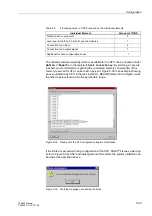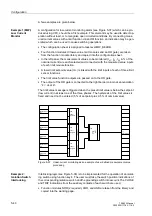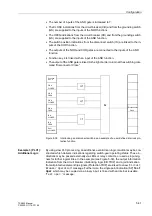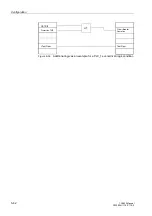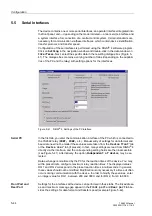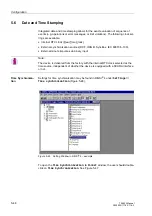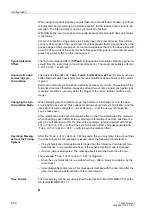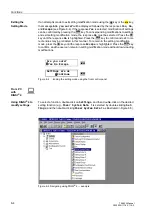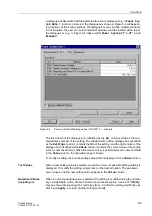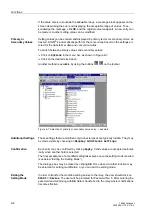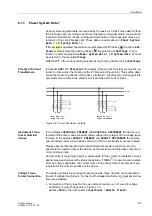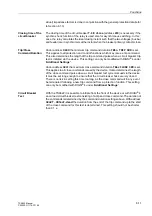
Configuration
5-50
7SA522 Manual
C53000-G1176-C119-2
When using radio clock signals, you must take into account that it can take up to three
minutes after device start-up or restored reception for the received time signal to be
decoded. The internal clock is not re-synchronized until then.
With IRIG B, the year must be set manually, because this standard does not include
a year value.
For synchronization using pulses via a binary input, the present device time will ad-
vance to 00 seconds of the next minute for values greater than 30 seconds when the
positive slope of the pulse arrives. For second values less than 30, the device time will
be set to 00 seconds of the current minute. Because this signal is not monitored, each
pulse has a direct effect on the internal clock.
Synchronization
Offset
The “Synchronization Offset” (
2IIVHW
) setting allows correlation of the time signal re-
ceived from the radio clock to local time (time zone). The maximum settable offset is
± 23 h 59 min = ±1439 min.
Annunciation due
to missing syn-
chronization
The tolerance time (
(UURU7LPH
/
)DXOWLQGLFDWLRQDIWHU
) for time synchroni-
zation fault indicates how long cyclical synchronization may be absent until an alarm
is given.
External or internal synchronization normally occurs every minute. The setting for the
tolerance time must, therefore, always be at least two minutes. Under poor radio clock
reception conditions, you may delay the trigger of the “error” status condition even
longer.
Changing the Syn-
chronization Mode
When changing synchronization mode, the hardware will change over to the new
source within one second. This causes breakdown of cyclical synchronization, and the
internal clock will be disrupted — as at start-up — until the new synchronization
source takes over.
After modification to the synchronization offset in the time signal/operating mode, or
when changing year in IRIG B, the cyclical synchronization is not lost, but there is a
jump. To call attention to this, the time value causing a jump is reported with “
7LPH
LQWHUUXSWLRQ21
” — without the synchronization offset, and subsequently with
“
7LPHLQWHUUXSWLRQ2))
” — with the synchronization offset.
Operating Messag-
es from the Timing
System
After the “
7LPHLQWHUUXSWLRQ21
” message, the you must take into account that
the clock will jump. This message is issued under the following circumstances:
−
if a synchronization interruption lasts longer than the tolerance time interval men-
tioned above, or as mentioned above, if the synchronization mode is changed;
−
if a time jump is anticipated. The message itself is stamped with the old time.
The message “
7LPHLQWHUUXSWLRQ2))
” is triggered:
−
when the synchronization is re-established (e.g., after a break in reception by the
radio clock);
−
immediately after a time jump. This message is stamped with the new time after the
jump, thus allowing determination of the jump interval.
Time Format
The time display may be set using either the European format (DD.MM.YYYY) or the
US format (MM/DD/YYYY).
n
Summary of Contents for siprotec 7SA522
Page 20: ...7SA522 Manual C53000 G1176 C119 2 ...
Page 64: ...7SA522 Manual C53000 G1176 C119 2 ...
Page 89: ...SIPROTEC 4 Devices 4 25 7SA522 Manual C53000 G1176 C119 2 Figure 4 20 CFC Logic example ...
Page 408: ...7SA522 Manual C53000 G1176 C119 2 ...
Page 456: ...7SA522 Manual C53000 G1176 C119 2 ...
Page 516: ...7SA522 Manual C53000 G1176 C119 2 ...
Page 620: ...Appendix B 48 ...




